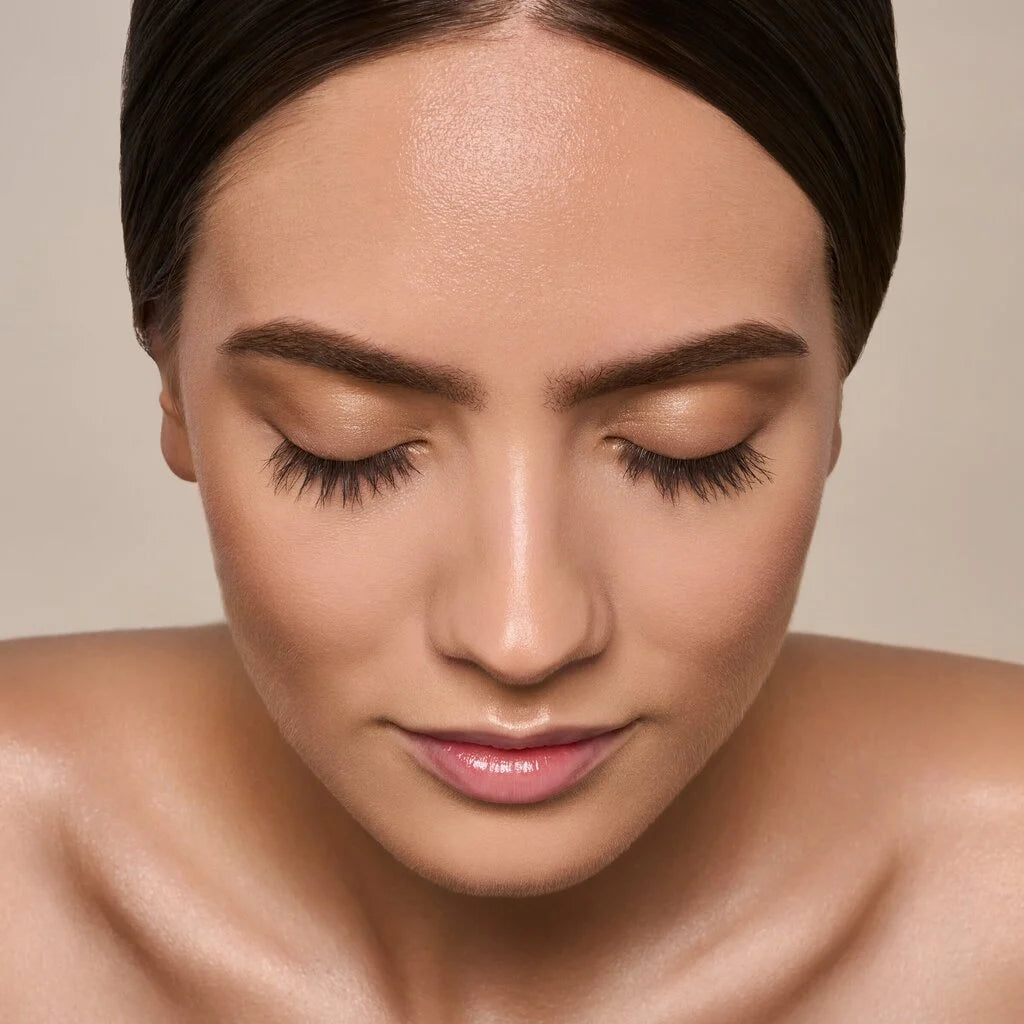
Eyelashes and Eyebrows. Here's what you need to know: structure, life cycle, growth stages.

A professional lashmaker should know not only how to apply eyelash extensions, but also their structure, functions and growth cycle.
The obsession with thick, voluminous eyelashes dates back to ancient Egypt. Fortunately, today there are many ways to get the eyelashes you dream of and treatments such as lamination and eyelash extensions are extremely popular and trendy.
These treatments They are NOT harmful for eyelashes and eyebrows: however, it is always best to rely on qualified personnel who know the products and procedures best.
The main function of eyelashes
is to protect our eyes from sand, dust, large quantities of water etc. Eyelashes and eyebrows are the strongest hairs, in fact 97% of eyelashes are made up of proteins and only 3% of water.
Eyelashes, unlike hair, stop growing at a certain length. Parameters such as length, density, thickness, color and even the curvature of the eyelashes (straight or twisted) are determined genetically. For example, brunettes have longer eyelashes than natural blondes. The thinnest cilia are considered to be in Europeans, and the thickest and stiffest are considered to be in Mongoloids.
The more melanin pigment in the structure of the eyelashes, the darker they are, and vice versa. The color of the eyelashes and hair may differ, but not more than a few shades. Although they are usually dark in people with dark hair and, conversely, light in people with blond hair.
Eyelash structure
Eyelashes are made up of a root (under the skin) and a hair (visible part of the eyelashes). The root (or bulb) is located at a depth of ~2 mm. This is where the growth of new eyelashes occurs.

The bulb is surrounded by a follicle, into the bottom of which the skin papilla is penetrated. Through it, the cilia receive nourishment and oxygen. A bundle of smooth muscles is attached to the bulb, the task of which is to raise / lower the hairs. Closer to the surface of the skin there are 2-3 sebaceous glands to lubricate the eyelashes.

- The medulla is a part of the eyelash visible to the human eye. In the cut, you can see the core, cortical layer and cuticle.
- Nucleus - a substance consisting of keratin (protein substance).
- The cortex covers 90% of the hair area. It is made up of keratinized cells that give strength.
- Cuticle - 5-10 thin layers of cells that cover the hair like tiles. It is the cuticle that protects the eyelashes from harmful effects and also gives them strength.
Human eyelashes grow in the wrong rows
- on the upper eyelid - in 2/4 rows, the number of eyelashes is about 150-250. Their average length is 7-12 mm.
- on the lower eyelid - in 1/2 row, there are approximately 75-100 eyelashes, with the average length of 6-8 mm.

The life cycle of eyelashes is divided into 4 phases:
Anagen is the active phase of growth of a new hair follicle, which lasts on average 30 days. The average eyelash growth rate is 0.12 to 0.14 mm per day.
Catagen is a short transition phase. At this time, the hair follicle shrinks. The average duration of the phase is 15 days.
Telogen - the follicle enters the resting phase. The duration is approximately 100 days. The phase ends at the moment of loss of the eyelashes (reception phase).
Early anagen is the maturation phase of the root of a new eyelash. The old eyelash falls out when the root of the new eyelash is already starting to mature.

In a healthy person, 85% of the hair on the head is growing. But eyelashes and eyebrows have a shorter growth phase, so they spend most of their "life" in the resting phase.
The life expectancy of eyelashes is 70 to 160 days. Eyelash renewal occurs within 7-9 weeks, which significantly affects the lifespan of eyelash extensions.
The exception will be:
-Physical damage to the eyelid.
- Hyper and hypothyroidism: Thyroid problems can lead to hair loss and hair loss.
-Blepharitis: acute or chronic inflammation that affects the eyelids, resulting in itching, burning and possible loss of eyelashes.
Because of this it is important to know and understand what the life cycle of eyelashes is before resorting to expensive procedures or attributing to yourself the diagnosis of "not suitable for extension and/or lamination treatment".
The eyelashes will grow again, even if they are plucked, but it will take longer than if they fell out naturally.
It is recommended to remove eyelash extensions very carefully by contacting a qualified lashmaker.
DID YOU KNOW THAT?
- Only mammals have eyelashes.
- The animal that has the longest eyelashes in the world is the camel. They can reach 10 cm in length, long eyelashes help these animals protect their eyes from sand and wind during desert sandstorms.
- In 2021 You Jianxia has set a new world record, with eyelashes reaching up to 20.5 cm!
- Taking medications can affect the growth of eyelashes and the lifespan of eyelash extensions.

